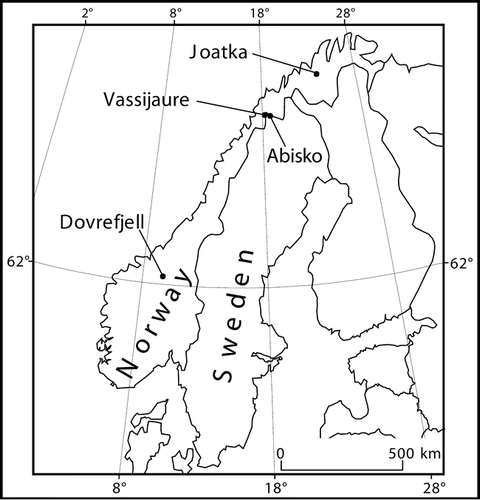Figures & data
FIGURE 2. Schematic diagram showing the transplant procedure between forest, and tundra soil, and between Abisko and Vassijaure, during the summer of 1999. The transplants involved gradients in altitude, vegetation type, and precipitation. At Abisko the sites involved were the Upper Tundra and the Lower Forest sites
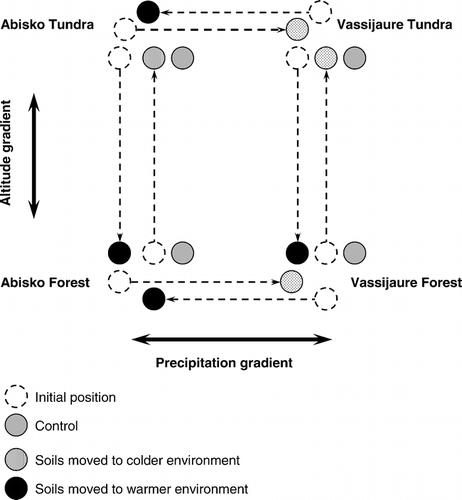
FIGURE 3. Net mineralization (and immobilization) of ammonium (NH4 +) during the summer and winter season of forest (F) and tundra (T) soils at Dovrefjell, Vassijaure, Abisko, and Joatka. Negative values indicate that N is immobilized by the decomposer organisms. Mean values and Standard Error (SE) of the mean are shown
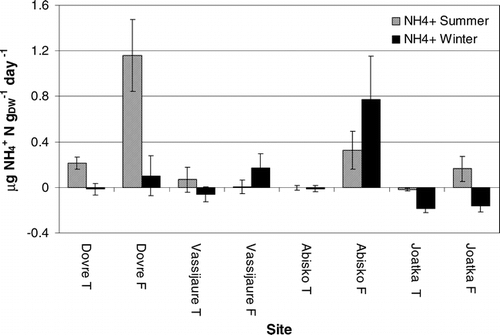
FIGURE 4. Net mineralization (and immobilization) of nitrate (NO3 −) during the summer and winter season at forest (F) and tundra (T) soils at Dovrefjell, Vassijaure, Abisko, and Joatka. Negative values indicate that N is immobilized by the decomposer organisms. Mean values and SE are shown
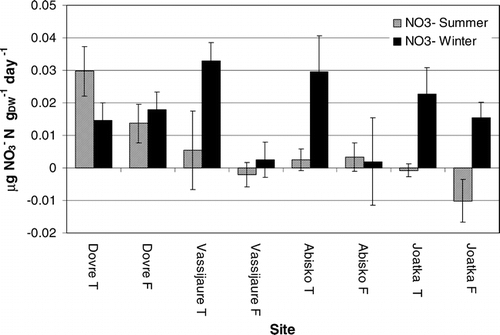
FIGURE 5. Regressions between mean summer N mineralization rates at both forest and tundra sites and the Gorzinski continentality index at the main sites (Dovre fjell, Vassijaure, Abisko, and Joatka). Note that Vassijaure and Abisko share the same continentality index, although they have markedly contrasting precipitation totals: 848 and 304 mm, respectively
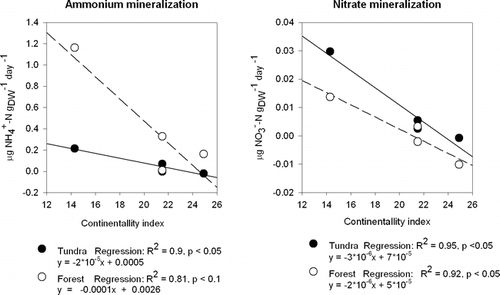
FIGURE 6. N-mineralization rates for control and transplanted soils from the Upper Tundra and the Lower Forest sites at Abisko, and from one tundra and one forest site at Vassijaure (see for a description of the transplant approach). “Control” is where native soil remains in situ at the site of origin. Mean values and SE are shown. Significant differences in mineralization rates compared to the control data are indicated in each graph, * indicates that the difference is significant at p < 0.05; **, p < 0.01; ***, p < 0.001
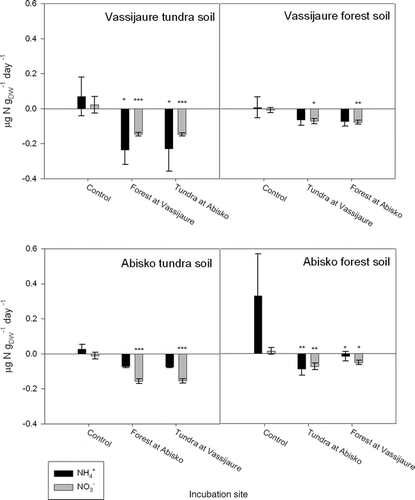
TABLE 1 Summary environmental information on the four sites in the Fennoscandian mountains
Table 2 Micrometerological data, unshielded surface temperature data and soil temperature at 50 mm (where soil is indicated in the column head) presented as mean annual temperatures (MAT) from 1999 and 2000, and January and July average temperatures from 2000 (calculated from hourly means). At Vassijaure only mean July temperature was available. nd = no data
TABLE 3 Gravimetric soil moisture content (gH2O gsoil −1) in forest and tundra soils at the four study areas at the start of the summer and winter incubation period
TABLE 4 Summary of statistical analysis of nitrogen mineralization rates at the four study sites with contrasting vegetation (forest vs tundra) over the summer and winter season. Data presented are from Type 1 test ANOVAs for (A) NH4 + and (B) NO3 −
